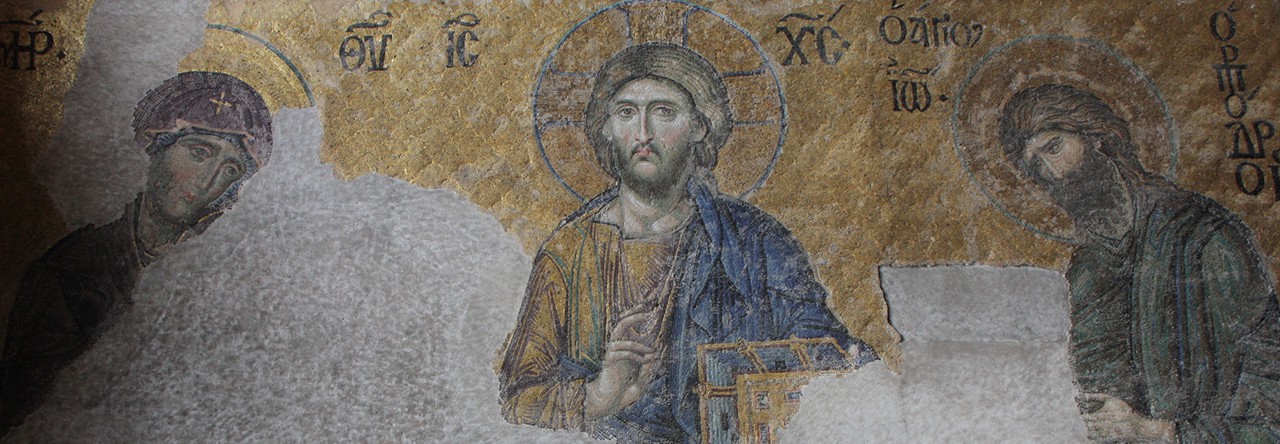This is the 2nd blog in this series which began with Two Versions of Constantine the Great. This blog series is ruminating on Constantine the Great as presented in two books: Paul Stephenson’s CONSTANTINE: ROMAN EMPEROR, CHRISTIAN VICTOR and Peter Leithart’s DEFENDING CONSTANTINE.
 In this blog just a couple of comments about Constantine’s faith and theology. While the Roman empire was largely polytheistic, some of the emperor’s leading up to Constantine as well as Constantine himself paid homage to one god as superior above the other gods. This belief is defined by Stephenson and Leithart as follows:
In this blog just a couple of comments about Constantine’s faith and theology. While the Roman empire was largely polytheistic, some of the emperor’s leading up to Constantine as well as Constantine himself paid homage to one god as superior above the other gods. This belief is defined by Stephenson and Leithart as follows:
“…henotheism, the belief in a greatest god, who surpassed in power all other deities.” (Stephenson, CONSTANTINE: ROMAN EMPEROR, CHRISTIAN VICTOR, p 30)
“…henotheistic (believing in a chief, though not exclusive , high God).” (Leithart, DEFENDING CONSTANTINE, p 40).
There was a growing trend in the paganism of the empire towards henotheism. Some see this as a step toward monotheism. It enabled military leaders to call their troops to rally around one god – the god who was giving them victories.
“As the empire’s crisis deepened in the middle years of the third century, Roman emperors resorted more fully to rhetoric, becoming unconquerable generals whose actions in war demonstrated the support and manifested the will of a single greatest god (summus deus).” (Stephenson, CONSTANTINE: ROMAN EMPEROR, CHRISTIAN VICTOR, p 75)
Constantine at one point honored the Unconquerable Sun as leading him to victory, but eventually transferred his allegiance to the God of the Christians whom he credited with his military success.
“Constantine exploited the traditional interaction between faith and military power, the imperial theology of victory, to construct for himself the image of ‘unconquered emperor’; he took as his patron the ‘greatest god’, whose identity was revealed to him in a vision; and later, having established his hold on power, he transformed himself from ‘unconquered emperor’, a style enjoyed by so many of his predecessors, to Christian Victor, a title unique to Constantine.” (Stephenson, CONSTANTINE: ROMAN EMPEROR, CHRISTIAN VICTOR, p 87)
Constantine’s soldiers followed the henotheism of their leader.
“Troops were ordered to pray to the greatest god who favoured their commander but did so in neutral terms. This is clear from the words of a prayer preserved by Eusebius …:
You alone we know as god,
You are the king we acknowledge,
You are the help we summon.
By you we have won victories,
Through you we have overcome our enemies.
To you we render thanks for good things past,
You also we hope for as giver of those to come.
To you we all come to supplicate for our emperor
Constantine and his god-beloved sons:
That he may be kept safe and victorious for us in long, long life, we plead.” (Stephenson, CONSTANTINE: ROMAN EMPEROR, CHRISTIAN VICTOR, pp 228-229)
 While the praise and prayer of the troops loyal to Constantine can be read as fairly generic rather than as particularly Christian, one would expect as much. If the history showed a sudden, total and completely inexplicable embrace of Christianity, one would suspect that the Christian writers of history had in fact rewritten the story to fit their own mythology. As it is, the history as recorded in the hymn above shows a more expected and gradual move of the people surrounding Constantine from polytheism to henotheism to the Monotheism of Christianity. As Constantine demonstrated his ability to be successful, the troops had ever more reason to trust him and to embrace the God to whom Constantine attributed his success.
While the praise and prayer of the troops loyal to Constantine can be read as fairly generic rather than as particularly Christian, one would expect as much. If the history showed a sudden, total and completely inexplicable embrace of Christianity, one would suspect that the Christian writers of history had in fact rewritten the story to fit their own mythology. As it is, the history as recorded in the hymn above shows a more expected and gradual move of the people surrounding Constantine from polytheism to henotheism to the Monotheism of Christianity. As Constantine demonstrated his ability to be successful, the troops had ever more reason to trust him and to embrace the God to whom Constantine attributed his success.

Pingback: Two Versions of Constantine the Great | Fr. Ted's Blog
Pingback: Did Constantine become Christian? | Fr. Ted's Blog